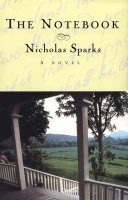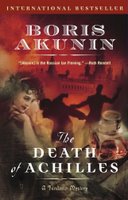
Suite Francaise by Irene Nemirovsky
I had been reluctant to read this book, but once I started reading it, I found it fascinating and moving. I had thought it was a book about the Holocaust, but of course, it is not. Instead, it is a very interesting book about the reactions of French people during and immediately after the German invasion of France during World War II.
When I began reading the book, I found the writing style very interesting. The book seemed to be written as an outline, with short declarative sentences, as if the intent of the author was to write a rough first draft and then fill in the details later, in a second draft. Later, I learned that the book was indeed a "first draft" written in long hand. I am certain that a second draft would have been written, and possibly more drafts as well as the editing by the publisher prior to publication; however, as I learned later, that opportunity did not come. To me, the succinct writing style added much to the appeal of the book.
As I read the book, I felt that the author concentrated on writing about wealthy people, but later, when I read the author's notes in the Appendices, I came to realize that she had drawn on people in her own life for all the characters in the book. Her father and husband were bankers, so several of her characters were bankers; she had lived her entire life in high society, so she wrote about characters in high society. The book made much more sense to me after reading the Appendices.
The writing styles of women and men are very different. As a woman, she wrote in a very descriptive style, and I found her careful, detailed descriptions to add greatly to the book. In particular, her descriptions of people fleeing Paris were very interesting. I also found her descriptions of the feelings of the women characters to be unexpected and very moving; only a woman could have written about those feelings. All in all, the book was a woman's book, even though I found it very interesting. Indeed, I didn't want the book to end. I wanted it to be completed, especially after reading her outline for the remaining parts of the book.
One cannot read the book, of course, without also having feelings about her death. The world is filled with death and atrocities; it goes on today as it has since the world began. Some of my own ancestors were slaughtered by immigrants to America, and reading about them is painful to me. America also suffered the stain of mistreating our own citizens of Japanese ancestry during World War II. We feel the pain of atrocities in all parts of the world, to all people, and any reminder of such atrocities is painful for me. I was deeply moved by the Appendices, particularly the letters. One can understand that Jews had no idea that their being arrested would lead to death; the whole world found out only later. So it is understandable that she and her husband would be fearful, but also would not flee. Equally moving was the heroism of the woman who hid and protected the daughters; what a wonderful woman she was.
In summary, this was a very interesting book, and the Appendices were very moving. Two separate stories connected by the author.



















